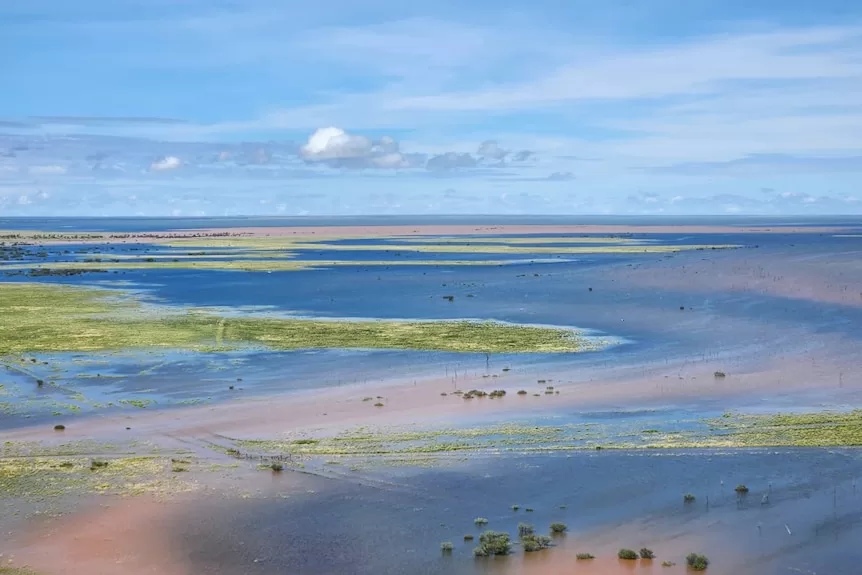- In short: After the best wet season in decades, a remote Kimberley desert lake system is in full flow.
- Paruku, or Lake Gregory, has risen dramatically over the past three months and the environment is thriving.
- What’s next? As the water dries, desert grasses grow underneath, regenating the country.
On the verge of two deserts in Australia’s remote north, channels that usually lay dusty and dormant are alight with green.
They splay out across the red dirt of the Paruku Indigenous Protection Area in WA’s Kimberley region like veins, pumping life into the country.
The land here is fed predominantly by dry floods that begin hundreds of kilometres to the north-east, when wet season rainfall fills the Sturt Creek in the Northern Territory.
This water slowly flows southwards, branching out into watercourses spanning kilometres and eventually reaching Paruku, or Lake Gregory.
Jamie Brown has been a Paruku Ranger for nearly 20 years. In his time living and working on the edge of the lake, he’s never seen it this full.
“This water brings life, it just regenerates the whole country,” he said.
“We’ve seen it in its bad times, where the lake really has no water at all.
“And now to see this water again, everyone’s really happy, getting out on country more, fishing and swimming and taking the kids out.”
Birdwatchers’ paradise
It’s not just people that revel in the thriving freshwater environment.
More than 100,000 birds will visit the lake system in wet years like this.
“They come with the monsoon rains when the big storms come and they migrate across the ocean with the winds and end up on the shores of Lake Paruku,” Mr Brown said.
With Paruku located 600 kilometres from the nearest ocean, the journey for many of these birds is especially epic.
“Asian plovers and even the seagull make it this far on winds to the lake,” Mr Brown said.
“And then we have all our normal birds that live here like the pelicans and swans and ducks nesting too.”
Ongoing benefits to the land
Those on surrounding cattle stations have also welcomed the overland flow.
Hayden Sale manages the pastoral company that subleases Lake Gregory station, which borders the Paruku IPA.
“It is somewhat similar to the channels of Queensland that make their way to Lake Eyre, and a similar arid environment,” Mr Sale said.
“You’ve got to have the right conditions, and this year we’ve got them.”
But managing cattle in a waterlogged environment comes with challenges.
“If you’re not right on top of it [the cattle] can get stuck on islands and run out of feed,” he said.
“So we are regularly checking them and walking or swimming them to where they need to be to make sure they’re safe.”
As the water recedes, the land continues to benefit.
“When it becomes very shallow, only a couple of feet deep in a lot of spaces, the grass underneath actually greens up and grows,” Mr Sale said..
“That water provides us with probably a couple of years worth of feed behind it.”
But for now, Mr Brown and other traditional owners who call Paruku country home, the water is there to enjoy.
“We are all back on the diet of eating fish,” Mr Brown said.
“There’s a lot of people out fishing now and catching a bucketload of spangled perch, enough to feed their family.
“And it’s free and it’s fun, out on country.”
Get our local newsletter, delivered free each Tuesday
